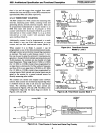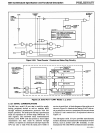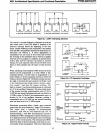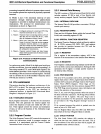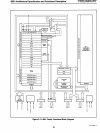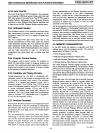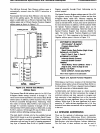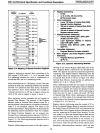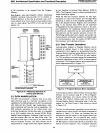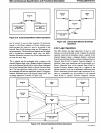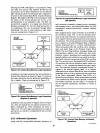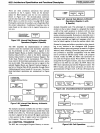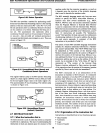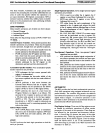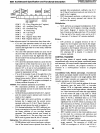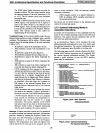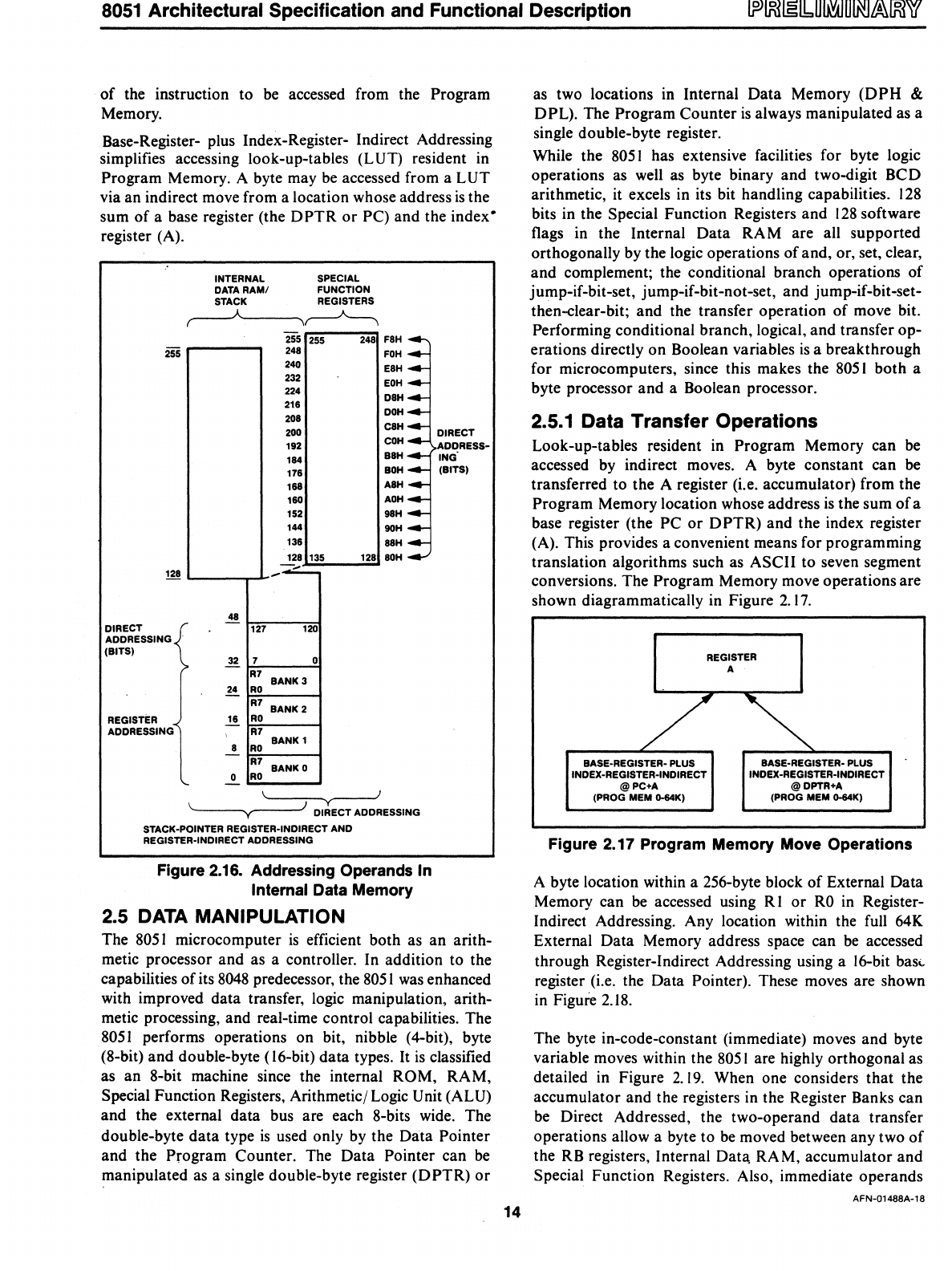
8051
Architectural Specification and Functional Description
of the instruction to be accessed from the Program
Memory.
Base-Register- plus Index-Register- Indirect Addressing
simplifies accessing look-up-tables
(LUT) resident in
Program Memory. A byte may
be
accessed from a LUT
via an indirect move from a location whose address
is
the
sum
of
a base register (the
DPTR
or PC) and the index·
register (A).
DIRECT
ADDRESSING
(BITS)
REGISTER
ADDRESSING
INTERNAL
DATA
RAMI
STACK
SPECIAL
FUNCTION
REGISTERS
~~
255 255
248
248
240
232
224
216
208
200
192
164
176
168
160
152
144
136
128 135 128
..,.....:::.-
~
127
120
.E.
7 0
R7
BANK 3
24
RO
R7
BANK2
.!!
RO
,
R7
BANK
1
8
RO
R7
BANKO
'-
0
RO
F8H
FOH
E8H
EOH
D8H
DOH
C8H
COH
B8H
BOH
ASH
AOH
98H
90H
88H
80H
~
"~--~y
) DIRECT ADDRESSING
STACK-POINTER REGISTER-INDIRECT
AND
REGISTER-INDIRECT ADDRESSING
Figure
2.16.
Addressing Operands In
Internal Data Memory
2.5
DATA MANIPULATION
DIRECT
ADDRESS-
ING
(BITS)
The
8051
microcomputer
is
efficient both as an arith-
metic processor and as a controller. In addition to the
capabilities of its
8048
predecessor, the
8051
was
enhanced
with improved data transfer, logic manipulation,
arith-
metic processing, and real-time control capabilities. The
8051
performs operations on bit, nibble (4-bit), byte
(8-bit) and double-byte (l6-bit) data types.
It
is
classified
as an 8-bit machine since the internal
ROM, RAM,
Special Function Registers, Arithmetic/ Logic
Unit (ALU)
and the external data bus are each 8-bits wide. The
double-byte data type
is
used only
by
the Data Pointer
and the
Program Counter. The
Data
Pointer can
be
manipulated
as
a single double-byte register (DPTR)
or
14
as two locations
in
Internal Data Memory
(DPH
&
DPL). The Program Counter
is
always manipulated as a
single double-byte register.
While the
8051
has extensive facilities for byte logic
operations as well as byte binary and two-digit BCD
arithmetic, it excels in its bit handling capabilities.
128
bits in the Special Function Registers and
128
software
flags in the Internal Data RAM are all supported
orthogonally
by
the logic operations of and, or, set, clear,
and complement; the conditional branch operations
of
jump-if-bit-set, jump-if-bit-not-set, and jump-if-bit-set-
then-clear-bit; and the transfer operation
of
move bit.
Performing conditional branch, logical, and transfer
op-
erations directly on Boolean variables
is
a breakthrough
for microcomputers, since this makes the
8051
both a
byte processor and a Boolean processor.
2.5.1 Data Transfer Operations
Look-up-tables resident
in
Program Memory can be
accessed
by
indirect moves. A byte constant can be
transferred to the A register
(Le.
accumulator) from the
Program Memory location whose address
is
the sum
of
a
base register (the PC
or
DPTR)
and the index register
(A). This provides a convenient means for programming
translation algorithms such as
ASCII to seven segment
conversions. The Program Memory move operations are
shown diagrammatically in Figure
2.
17.
BASE-REGISTER- PLUS
INDEX-REGISTER-INDIRECT
@PC+A
(PROG MEM 0-64K)
REGISTER
A
BASE-REGISTER- PLUS
INDEX-REGISTER-INDIRECT
@OPTR+A
(PROG MEM 0-64K)
Figure 2.17 Program
Memory
Move Operations
A byte location within a 256-byte block of External Data
Memory can
be
accessed using R I or
RO
in
Register-
Indirect Addressing. Any location within the full 64K
External Data Memory address space can
be
accessed
through Register-Indirect Addressing using a 16-bit bas
..
register (i.e. the Data Pointer). These moves are shown
in Figure
2.18.
The byte in-code-constant (immediate) moves and byte
variable moves within the
8051
are highly orthogonal as
detailed
in
Figure
2.
19.
When one considers that the
accumulator and the registers in the Register Banks can
be
Direct Addressed, the two-operand data transfer
operations allow a byte to
be
moved between any two
of
the
RB
registers, Internal Data, RAM, accumulator and
Special Function Registers. Also, immediate operands
AFN-01488A-18



